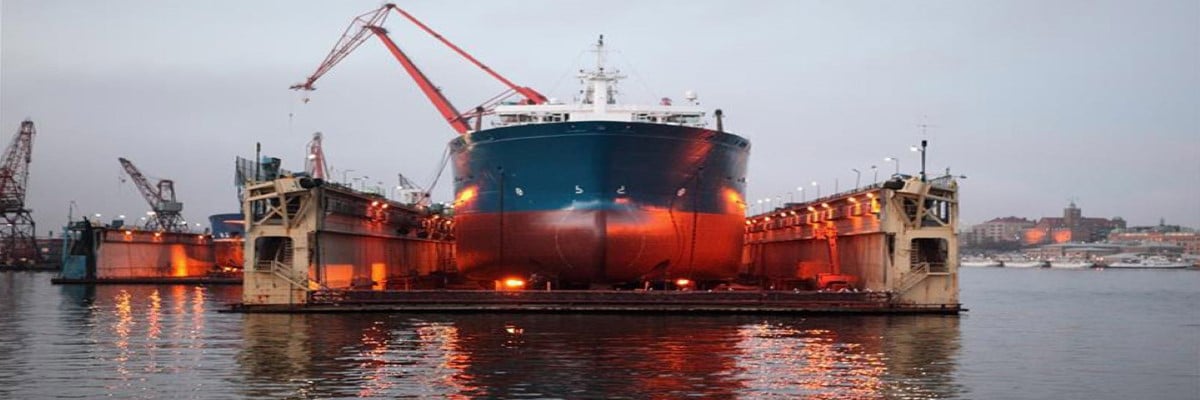
Rethinking marine performance: Focus on the equipment that matters
Downtime is expensive – Make every dry-docking count
Dry docking has always been essential for vessel maintenance. In the past, it was mainly driven by class requirements or fixed schedules. But in today’s competitive and heavily regulated marine industry, it’s no longer just a box to tick. It’s a rare chance to reset your vessel’s performance from the inside out.
Smart shipowners now see dry docking as more than compliance. They use it to improve efficiency, extend equipment life, and boost return on assets. By using data, diagnostics, and lifecycle planning, they move from reactive repairs to proactive, performance-focused strategies.
From my experience, the best results come when shipowners treat dry docking as a strategic reset, not just a repair session. Missing that window can lead to higher fuel burns, lower efficiency, costly emissions penalties, and rising ownership costs.
Focus on the equipment that matters most
Not all onboard systems have the same impact. A handful of critical components directly influence fuel use, emissions, reliability, and safety:
- Fuel and lube oil separators – Key to fuel cleanliness and efficient combustion. Poor separation leads to sludge buildup, faster wear, and MARPOL compliance issues.
- Boilers and burners – Even small efficiency losses increase fuel consumption and emissions.
- Heat exchangers – Reduced heat transfer means higher fuel use and operational strain.
- Freshwater generators – Vital for crew welfare and many onboard systems.
- Propulsion and steering systems – Directly tied to vessel safety and maneuverability.
Take separators as an example. Many shipowners see them as “install and forget” equipment, but regular reconditioning improves efficiency, lowers sludge disposal costs, and reduces maintenance for downstream components like injectors and pumps.
Why overhauls make sense during dry docking
Doing overhauls while the vessel is in dock isn’t just convenient, it’s good business. Opening systems for inspection improves access, reduces safety risks, and avoids disrupting voyages. It also allows for coordinated service schedules, better pricing, and availability of specialized technicians.
Planning is critical. Aligning spare parts, diagnostics, technician mobilization, and service scopes before docking ensure every day in port is used effectively. I’ve seen shipowners save weeks of downtime and thousands in repair costs by using a lifecycle approach to reconditioning.
Instead of relying only on calendar-based service intervals, use condition monitoring and performance data to guide overhaul decisions. This supports predictive maintenance and reduces the risk of costly mid-voyage failures.
Bundling work such as cleaning heat exchangers, reconditioning separators, and servicing freshwater systems—during one docking session can also cut labor costs and downtime.
Your dry-docking priority checklist
- Fuel and lube oil separators – Recondition based on performance data and sludge analysis.
- Boilers and burners – Clean scaling and fix combustion issues to prevent fuel waste and safety risks.
- Heat exchangers – Remove fouling, test for leaks, and restore thermal efficiency.
- Freshwater generators – Check capacity and energy use for reliability.
- Propulsion and steering systems – Inspect for leaks, wear, and alignment problems.
Let the equipment’s condition and not the calendar dictate what gets replaced.
The long-term payoff
A performance-driven dry-docking strategy delivers benefits well beyond the docking period:
- Reliability – Overhauled systems are less likely to fail mid-voyage.
- Compliance – Cleaner, more efficient systems help meet IMO and MARPOL standards.
- Fuel savings – Even a 2–5% fuel efficiency improvement can mean huge savings over time.
- Crew efficiency – Reliable systems free crews from constant firefighting.
Choosing the right service partner
Marine equipment is only as good as the service supporting it. Choose a partner with proven technical expertise, dry-docking experience, and OEM-grade capabilities. Look for:
- Pre-docking inspections and planning
- Data-driven recommendations
- OEM reconditioning facilities
- On-time delivery and commissioning
- Complete compliance documentation
Partners who combine lifecycle support with condition monitoring can save millions of fleets.
Dry docking is not an expense, it’s an investment. Shipowners who treat it as a strategic reset consistently outperform those who don’t. The question isn’t whether you can afford to overhaul critical systems, it’s whether you can afford not to.
About Isis Villarreal
Isis Villarreal is the Business Development Manager for the Marine After Service Sales Division at Alfa Laval Middle East. She has over 10 years of experience in the marine industry and has held different positions, mainly in international Sales. She began her career as a marine engineer and has since transitioned into commercial and contractual management roles.
